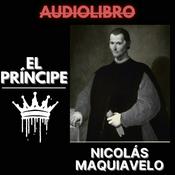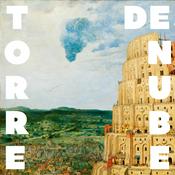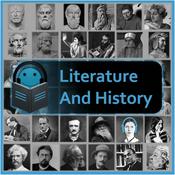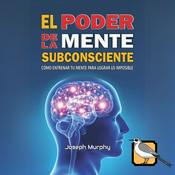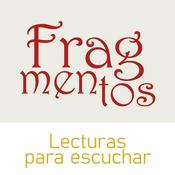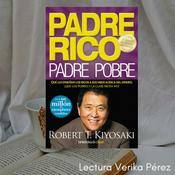23 episodios

A Very Merry Saturnalia to You
25/12/2025 | 45 min
Every December, the Ancient Romans took part in a festival of feasting, drinking, gift-giving and awkward office parties. So far, so Christmas. But, in this episode, Mary and Charlotte ask what really went on during the Roman festival of Saturnalia and whether the comparisons to Christmas really hold? As is so often the case, we discover a people and culture similar to us in some ways, yet also completely alien. The records show that socks were sometimes Saturnalia presents – but, disturbingly, so too were enslaved people. Jokes about the boss were acceptable at Christmas parties, unless - as we discover in one macabre story - the boss happens to be the emperor Nero. The brutal side of Saturnalia becomes really apparent when you consider the differences between Santa and Saturn. One likes to spoil children, the other has a horrid habit of eating them. So if you do decide to celebrate Saturnalia, no laughing at the boss, and keep those chimneys blocked! Charlotte and Mary’s reading suggestions The best guides to the Saturnalia are the ancient sources themselves. Martial’s “gift tags” are Books 13 and 14 of his Epigrams (rather stilted translations here: https://www.ccel.org/ccel/pearse/morefathers/files/martial_epigrams_book13.htm and https://www.tertullian.org/fathers/martial_epigrams_book14.htm The Saturnalia of Nero and Britannicus is described at Tacitus Annals 13, 15. Macrobius’ Saturnalia (c 400 CE) is a long, multi-book, learned discussion (set at a Saturnalian festival), which speculates on the origins of the festival among much else. Mary discusses the chilling Roman practice of giving enslaved people as presents in her Emperor of Rome (Profile, pb, 2024) @instaclassicpod for Insta, TikTok and YouTube @insta_classics for X email: [email protected] Instant Classics handmade by Vespucci Producer: Jonty Claypole Executive Producer: Natalia Rodriguez Ford Video Editor: Jak Ford Theme music: Casey Gibson Learn more about your ad choices. Visit podcastchoices.com/adchoices

A Day at the Theatre in Ancient Athens
18/12/2025 | 51 min
The Ancient Greeks, it’s often said, invented theatre - and the plays they wrote are still big box office today, particularly when you have a Hollywood star in the main part. In this episode, Mary and Charlotte wonder what a day at the theatre in Ancient Athens was actually like. Did it bear any resemblance to theatre-going experience in the West End or Broadway today? The more one gets into the nitty-gritty of Greek theatre festivals - the military parades, hymn singing, displays of war booty, processions of unmarried girls, orphans, and large phalluses - the more alien it seems. The fact that it took place in the open air and the actors wore masks is the least of it. So what was really going on when the Athenians got together to watch a play? Why was the state so involved? And would Mary and Charlotte, as women, have even been allowed in? @instaclassicpod for Insta, TikTok and YouTube @insta_classics for X email: [email protected] Instant Classics handmade by Vespucci Producer: Jonty Claypole Executive Producer: Natalia Rodriguez Ford Video Editor: Jak Ford Theme music: Casey Gibson Learn more about your ad choices. Visit podcastchoices.com/adchoices

A Funny Thing Happened on the Way to the Forum (or did it?)
11/12/2025 | 42 min
From Asterix to Up Pompeii to Life of Brian, there are lots of modern comedies about the Romans, but what did the Romans themselves find funny? In this episode, Mary and Charlotte share their favourite Roman jokes and ask the bigger questions: what can Roman humour tell us about the world of ancient Rome itself? Can we still ‘get’ Roman jokes and do any of them still have the power to make us laugh now? Fortunately, there’s a surprising number of Roman jokes that survive today - whether graffiti, on papyrus and an actual joke book called Philogelos. Despite the contemporary image of Rome as an autocratic, relentlessly bloodthirsty society, their jokes tell a different story. Works like Apocolocyntosis (The Pumpkinification of the divine Claudius) by Seneca show a huge irreverence to imperial grandeur, while the surviving jokes we have very rarely exhibit the cruelty we associate with a society hooked on slavery and gladiatorial games. They also suggest a widespread anxiety around self-identity - jokes about people who don’t know who they are really or how they fit into society. Finally, Mary reveals her favourite Roman joke of all time. But will Charlotte laugh? The stakes are high. Listen to find out. @instaclassicpod for Insta, TikTok and YouTube @insta_classics for X email: [email protected] Mary and Charlotte recommend some further reading: Charlotte recommends Laughter in Ancient Rome: On Joking, Tickling, and Cracking Up (UCal press pb, new ed. 2024) by one Mary Beard as ‘the’ book on Roman humour. Mary got a lot out of: J, Bremmer and H. Roodenburg, A cultural history of humour (Polity pb, 1997) J. Clarke, Looking at Laughter: Humour, Power and Transgression in Roman visual culture (UCal press, 2007). It includes the wonderful images of the philosophers on the lavatory. S Critchley, On Humour (Routledge pb, 2002) Though she warns that books on laughter are often quite serious! Available online – a translation of Seneca’s Apocolocyntosis …and of the Philogelos And there are other selections from that collection, usually omitting the ones we don’t get! Try https://diotima-doctafemina.org/translations/greek/45-jokes-from-the-laughter-lover/ The jokes of the Emperor Augustus are collected in Macrobius, Saturnalia Book 2 (you can find a translation in the Loeb Classical Library, Harvard UP) Instant Classics handmade by Vespucci Producer: Jonty Claypole Executive Producer: Natalia Rodriguez Ford Video Editor: Jak Ford Theme music: Casey Gibson Learn more about your ad choices. Visit podcastchoices.com/adchoices

Life, Death and Gladiators in Roman London
05/12/2025 | 1 h 2 min
Recorded live in an actual Roman amphitheatre underneath the Guildhall Art Gallery in London, Mary and Charlotte uncover the (Roman) origins of one of the world’s great cities. London’s Roman amphitheatre may not be the Colosseum, but it’s thought it could hold up to 7,000 spectators, which is not nothing in the ancient world. London was founded soon after the invasion by the Romans in 43 CE as a port city, on the lowest bridgeable part of the Thames, and it quickly became a hub of trade and commerce. By the 60s CE, it was significant enough for Boudica to have a crack at burning it to the ground (and the archaeology suggests she was successful). But what was the city like – and does it bear any relation to its modern counterpart? Evidence suggests, then as now, London was a multicultural city, and part of an administrative and trade network that connected it to the opposite edges of the empire and beyond. From London we have tombstones of men born in Antioch and Athens. And evidence of several religions with origins in far-flung parts of the empire, including the cult of Mithras, which developed in Iran; Isis, originally from Egypt; and Cybele, with its roots in Asia Minor. Finally, Mary and Charlotte come back to the ground beneath their feet. Who would have come to this amphitheatre back in the day? And what took place? In all honesty it’s best not to think of Russell Crowe and lions. Rather some local pot-bellied thugs and wild boar from the local forests. But there’s space for both, right? Our thanks to the Guildhall Art Gallery, the City of London Corporation and the Cultural Mile Business Improvement District for hosting us. And do visit London’s Roman Amphitheatre. It’s open Monday to Sunday 10am-5pm. It is very much worth a visit and it is FREE. Content warning: Mary and Charlotte have a squeamish conversation about a Roman instrument now in the British Museum which may or may not have been used for castration. @instaclassicpod for Insta, TikTok and YouTube @insta_classics for X email: [email protected] Mary and Charlotte recommend some further reading: Mary recommends Charlotte’s Under Another Sky (Vintage pb, 2014), showing how the remains of the city still have an impact now. Roman Britain, by Richard Hobbs and Ralph Jackson, is a beautifully illustrated and concise guide to the province – with a photo of the infamous castration tool (British Museum Press, pb, 2010) A recent survey of the whole history of Roman London is: Richard Hingley, Londinium: A biography (Bloomsbury pb, 2018) For more information on Roman shoes: https://www.londonmuseum.org.uk/blog/these-boots-were-made-for-romans/ For a visit to the temple of Mithras: https://www.londonmithraeum.com/ The full text of the document of the sale of Fortunata is here: https://romaninscriptionsofbritain.org/inscriptions/Brit.34.22 Instant Classics handmade by Vespucci Producer: Jonty Claypole Executive Producer: Natalia Rodriguez Ford DoP:Jéromo Monnot Camera Operator 1 and Photgrapher: Guillaume Valli Camera Operator 2: Vera Novikova Sound Engineer: Nathan Cucharo Video Editor: Jak Ford Theme music: Casey Gibson Learn more about your ad choices. Visit podcastchoices.com/adchoices

Athena: Private Life of a Greek Goddess
27/11/2025 | 43 min
Athena: goddess, shape-shifter, helper of heroes, fashion guru, patron deity of Athens and a bit of a daddy’s girl. She’s also one of the most elusive and puzzling characters in Greek mythology. In this episode, Mary and Charlotte ask who exactly is Athena? Is she a female role model for feminine power? More importantly, what exactly is a god in Greek mythology? Part of Athena’s appeal is that she bucks the perception of Ancient Greece as inflexibly misogynistic. For Charlotte, discovering Athena as a girl was part of what drew her to the classical world. And, as Mary’s mother once said (to the young Mary): “If Athens was the kind of society you tell me it was in which women had no power,I don't understand why their patron deity was a goddess.” Many years later, Mary - and Charlotte - still struggle to answer this question, which is part of what makes her so enduringly fascinating. In uncovering Athena’s story and contradictions, they also reveal the origins of the phrase ‘under the aegis’, where Nike shoes got their name from, and why - if Athena were around today - she’d probably be Mark Zuckerberg’s corporate guru. @instaclassicpod for Insta, TikTok and YouTube @insta_classics for X email: [email protected] Mary and Charlotte recommend some further reading: For the Greek texts and myths to which we refer: Homer, The Odyssey, tr Emily Wilson, Norton, 2018 Homer, The Iliad, tr Emily Wilson, Norton, 2023 Aeschylus, Oresteia, in James Romm and Mary Lefkovitz, eds The Greek Plays, 2017 (a really useful anthology of 16 translations of Greek plays). The Eumenides which we discuss is the third play in Aeschylus’ trilogy on the murder of Agamemnon and its upshot. The title means ‘Kindly Ones’, a euphemism for the Furies who are pursuing Orestes for the mudder of his mother. Timothy Gantz, Early Greek Myths, Johns Hopkins, 1996 (a mighty two-volume tome, for the serious student) Charlotte Higgins, Greek Myths, Vintage, 2022 Susan Deacy, Athena, Routledge, 2008 discusses the overall character of the goddess. On polytheism generally, L Bruit Zaidmann and P Schmitt Pantel, Religion in the Ancient Greek City, Cambridge 1992, is one of the clearest introductions (the full text is available online). Instant Classics handmade by Vespucci Producer: Jonty Claypole Executive Producer: Natalia Rodriguez Ford Video Editor: Jak Ford Theme music: Casey Gibson Learn more about your ad choices. Visit podcastchoices.com/adchoices
Más podcasts de Arte
Podcasts a la moda de Arte
Acerca de Instant Classics
Escucha Instant Classics, Grandes Infelices y muchos más podcasts de todo el mundo con la aplicación de radio.net
Descarga la app gratuita: radio.net
- Añadir radios y podcasts a favoritos
- Transmisión por Wi-Fi y Bluetooth
- Carplay & Android Auto compatible
- Muchas otras funciones de la app
Descarga la app gratuita: radio.net
- Añadir radios y podcasts a favoritos
- Transmisión por Wi-Fi y Bluetooth
- Carplay & Android Auto compatible
- Muchas otras funciones de la app

Instant Classics
Descarga la app,
Escucha.








